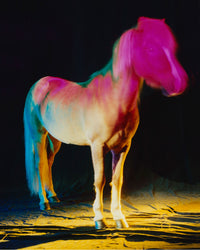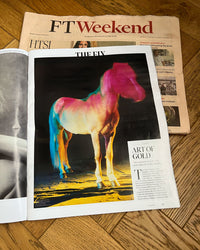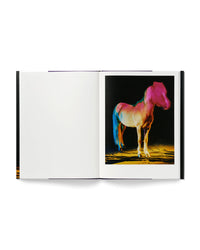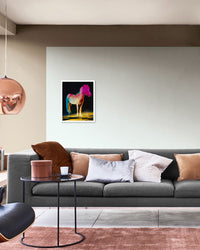Your cart is empty!
- Edition of 17
- 19.5 x 24 in / 49.5 x 61 cm
- Giclée print on Hahnemühle Photo Rag Ultra Smooth
- Signed, numbered & titled on reverse
- Certificate of authenticity
- Free shipping worldwide






£900.00
_____
Gareth McConnell’s psychedelic photographs of Icelandic horses reimagine these animals not as symbols of control or nobility, but as electric, cosmic beings flickering between dream and hyperreality. Bathed in neon hues, they pulse with strange sentience, echoing art historical and literary references—from Franz Marc’s spiritual color theory to Edwin Muir’s apocalyptic steeds and Nietzsche’s Turin horse—each adding layers of meaning around freedom, chaos, and the unknowable. Set against Iceland’s mystical, volcanic landscape and resonating with the energy of interstellar ley lines, McConnell’s horses become more than animals; they are surreal messengers, blurring the boundaries between nature, myth, and the digital sublime.
_____
‘These fantastical Horses look like My Little Ponies on Mars'
Sam Anderson, The New York Times Magazine
_____
‘He shines improbably glorious, cosmic lights on the horses, using colours like those associated with transformative mood experiences such as music and dance, drug use, or the bright sunlight that falls through the stained-glass window of cathedrals.’ Neal Brown, author of Tracey Emin (Modern Art series), Tate Publishing